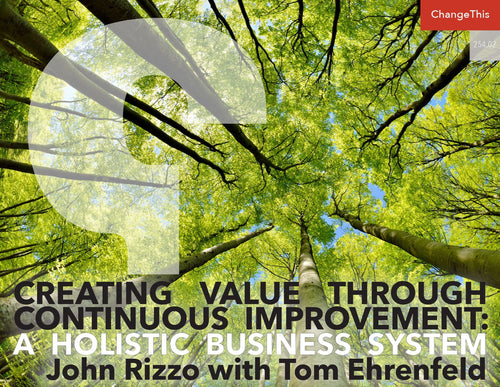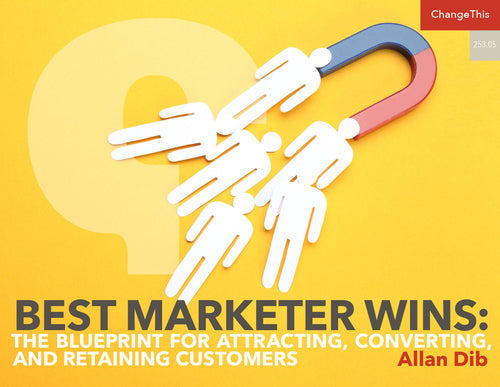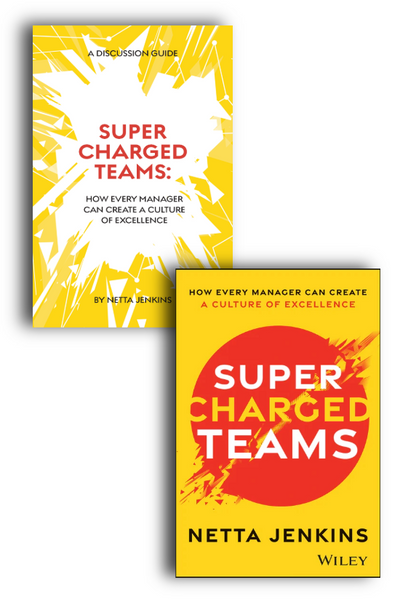Thriving in Chaos: A Mental Model for Change in Business and Life
I design and invest in systems that are both kind and mathematically true.
I am a former high school teacher and long-time private equity investor who ended up being the unlikely first-time CEO of a company only a few months away from its second—and most likely fatal—bankruptcy filing in three years. During my first six months there, I even had to hire an armed security officer to protect employees worried about their physical safety due to irate vendors. We had so little in the way of financial resources that we sold excess shelving from the distribution center to make payroll. Also, did I mention that the company employed and served a demographic that, on the surface at least, looked nothing like me?
Chaos. It was complete chaos.
But despite the worry and uncertainty, I never felt so calm in my life. I even had a smile on my face when, during the first town hall meeting, I told my new colleagues that I was likely the least qualified person (well, on paper, anyway) to serve as CEO.
Amid all the pandemonium, and with neither the time nor the bandwidth for anything other than the truth, I could speak confidently of only two things: kindness and math.
What was supposed to be an interim six-month engagement, a brief hiatus from my private equity life, instead turned into a seven-year run as Chairman and CEO of Ashley Stewart. Without a dollar of debt, we generated an internal rate of return in excess of 160% for my original investors, and our innovation ended up being showcased at conferences like Dreamforce and the National Retail Federation’s Big Show—this, only a few years removed from not even having Wi-Fi in our headquarters.
After stepping down in 2020, driven in large part by the untimely death of my mother, I received invitations to teach my operating system in classrooms at both MIT Sloan School of Management and Howard University, where I serve as the Johnson Chair of Entrepreneurship.

Meanwhile, I have continued to apply these same processes and principles as both guide and investor at some of the most future-forward organizations in the private sector. Early next year, I’ll give a keynote address on the subject of business leadership readiness to the deans of the country’s leading business schools. In short, there is a general, growing consensus that the leaders of the future need a different skill set.
Long after my stepping down as Chairman and CEO, folks like the TED Conference and Brené Brown discovered the story, and so did a host of other organizational systems and leadership experts in both the private and public sectors in the U.S. and across the globe. A book soon followed, opening up as the number one nonfiction title across all channels and media in its debut week, according to USA Today.
And here we are now.
But, why now? Why not earlier? Maybe the world, our collective humanity, had not yet experienced an adequate level of chaos—perceived or otherwise—to understand what our team had to endure and ultimately managed to overcome.
The pandemic certainly provided a small taste of the fragility of the systems of life undergirding the systems of work. Since then, we have all come face to face with existential concerns that, in some ways, eclipse the financial trauma of the Great Recession of 2008-2009.
How does a business leader thrive, let alone survive, in an era where the pace of change and volatility of outcomes are so feverish? Maintaining focus is difficult enough for the person in the mirror. What about our co-workers? They are reading the same algorithmically generated news feeds about potential civil wars, the Singularity, depression, adolescent suicide, currency devaluation, and global warming.
Chaos, whether real or perceived, can trigger fear in humans. Through no fault of our own. We are simply wired that way.
I lived that fear. In a windowless cafeteria in a dingy distribution center in Secaucus, New Jersey. Weeks away from certain liquidation. Two hundred miles away from home. A Korean American man with no fashion sense who found himself in charge of an insolvent clothing business predominantly serving and employing Black women across the United States. All while trying to care for his dying father, who was in and out of a New Jersey hospital forty miles away with a feeding tube in his stomach.
But I—we—overcame that fear. We embraced the chaos, leaned into that uncertainty, and came out the other side as a reinvented company. Maybe even more importantly, I and countless others emerged as different people with more agile mindsets. And in the end, we shocked and inspired the global investment and retail-consumer worlds.
This is what the book is about. The how.
It probably won’t surprise you that there are no to-do lists telling you how to leverage chaos to your advantage. There are no magic formulas or elixirs that give you three or five solutions. Change is immersive and circular, not linear. In MIT-speak, change requires a holistic and mathematical rebalancing of systems—both external and especially internal.
Change lies within us all. Ironically, we just have to slow down long enough to allow that change to emerge. As we get older, it’s easy to overthink an overcomplicated world and forget the natural wisdom and values of humanity we intuitively understood as children.
Sometimes, we have to give ourselves permission to look at the business of life, and the life of business, in a different way. To rethink and maybe rediscover some of our engrained perceptions and perspectives. To free ourselves from group think.
So, what’s the best way to get started?
It starts with you and a deeper understanding of why and how you make decisions and behave in certain ways. I’m talking about life, not work. After all, for all of us, the work environment is just a part of our overall portfolio of living. Or at least, it should be.
Keep in mind, many of the sources of chaos have much more to do with civics and society at large, less about work. I know, there are seemingly twenty articles per day about what the future of work will look like. As I see it, however, the more fundamental issue being debated is how humans, especially our children, are going to live. Beyond the financial, the issues at hand are sociological, neurological, and biological.
It should logically flow, then, that the underpinnings of any sustainable change process lie in “non-business” disciplines. Cognitive science. Civics. Physics. Behavioral economics. We are humans, after all. Even at work.
Embracing this logic allows us to look at seemingly unemotional business disciplines like accounting, finance, economics, and corporate law through a different lens. To remind ourselves that financial and social capital are not untethered. That conventions of measurement like accounting are made up by human beings. They are not immutable. They reflect only a limited snapshot of the past. They don’t measure, let alone create, future possibilities.

By giving themselves permission to reconsider tightly held beliefs, leaders encountering chaos can reassess other mental models. They might also realize, as I did, that many of the conventions of the past stand in the way of the innovation necessary to survive and thrive in the future.
For instance, Maslow’s famous pyramid was actually put together by a consultant, which ended up distorting the real-life hierarchy of human needs. Simon Kuznets, who invented the GDP, warned Congress against using his measurement as a proxy for the nation’s welfare. He knew that income statement measurements, like net profits, are, quite simply, inaccurate without an appreciation of the balance sheet.
During my time leading Ashley Stewart, I revisited and reevaluated many mental models I learned at Harvard College, Harvard Law School, and on Wall Street. Some were outdated, and others were overly simplistic and binary. In doing so, I was able to lead a group of unlikely colleagues, paralyzed by despair, to a generationally unprecedented business transformation.
Most importantly, though, I forged lifelong friendships and was personally transformed. Why? Because I finally understood the dynamics between life, money, and joy—for myself, my colleagues, and the collective organization. Just in time to say goodbye one final time to my parents. And in doing so, I discovered the true meaning of success.
Certain passages adapted from red helicopter – a parable for our times: lead change with kindness (plus a little math) by James Rhee, published by HarperOne. Copyright © 2024 by JCR Holdings, LLC. All illustrations owned by JCR Holdings, LLC.











































